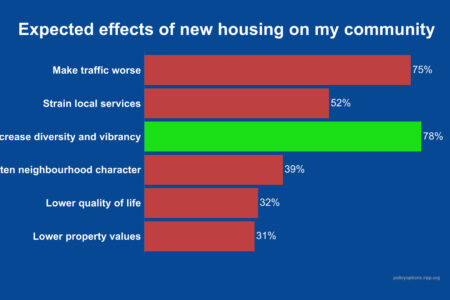
(Version française disponible ici)
The path toward a consensus strategy to bolster news journalism took a few new twists in Canada’s smoke-filled early weeks of summer 2023.
The federal Parliament passed the Online News Act, a.k.a. Bill C-18, and its chief targets, Meta and Google, promised news-throttling countermeasures. Bell Media, owner of the country’s biggest private TV network, cut 340 jobs and then asked the Canadian Radio Television and Telecommunications Commission (CRTC) for relief from all license conditions for local news. Meanwhile, the two biggest online journalism companies in Canada – Postmedia and Nordstar – announced merger negotiations (only three years after their “swap and close” deal shuttered 44 local publications) and then halted talks citing, amongst other things, “regulatory and financial uncertainty.”
Into this conflagration of reminders of Canadian journalism’s sustainability crisis came an ambitious proposal for a national news strategy from respected conservative voices Konrad Von Finckenstein* and Peter Menzies, published June 7 by the Macdonald-Laurier Institute.
Their highly readable paper, engagingly entitled And Now, The News – A national news media policy for Canada, deserves careful consideration as a refreshing alternative to shouts across rhetorical canyons and nihilist trashing of mainstream media.
While we don’t agree with all of And Now’s conclusions and recommendations, its foundational principles are clear and consistent with a rich history of protecting Canadian news media in which pivotal contributions were made by the Yale Report on broadcasting in January 2020 and the Public Policy Forum’s The Shattered Mirror in 2017. The latter report, coupled with collaborative lobbying by news publishers, pushed the Liberal government to shape several policy moves including major funding and tax initiatives plus the aforementioned Bill C-18.
The objective: sustainable journalism
Like its predecessors, the Von Finckenstein-Menzies report fosters a policy objective on which there seems a growing consensus: that the state should help to sustain journalism. This objective seems to rest on four principles.
First: news is essential to democracy. Verifiably factual information about matters of public interest is not just any item for sale in the market square. Rather, responsibly reported news is a “public good” that has gained special importance as people find it increasingly hard to distinguish broadly reliable facts from widely believed falsehoods due to information disorder.
Second: journalism worth saving must include pluralistic efforts to describe current events from diverse points of view. This characteristic of what’s commonly meant by a free press is threatened when ownership is consolidated.
Third: news is most clearly distinguished from propaganda when its producers display journalistic autonomy, which includes independence from government influence.
And fourth: sound policy should not aim to save each and every news outlet as if all are untouchable, but seeks to sustain a news industry that rewards quality, innovation and entrepreneurial success.
Agreeing on these principles comes more easily, however, than buying into the complete set of And Now’s proposed policy tools, of which some echo or fine-tune familiar ideas, some suggest radical innovation, and some need to be costed to assess their feasibility.
Like all policy tools, these rest on formative policy choices—three in this case: (1) that CBC should retain a pivotal role in providing online news; (2) that tax incentives and not subsidies should bear the weight of supporting quality journalism and innovation; and (3) that Big Tech should bear some of the cost of producing news.
1) A pivotal role for CBC
Despite their conservative perspective, Von Finckenstein and Menzies land far from the current “defund the CBC” default, instead positing an important public role for the public broadcaster. In this view, CBC should see itself less as a competitor with other news organizations and more as a seminal provider of news and information for everyone.
Among the implications of this policy choice: the CBC should cease to sell advertising, ensure the broadest demographic and regional coverage of basic daily news, and share editorial output in a Creative Commons available to all other news outlets.
These ideas already enjoy considerable support, and while there’s lots to debate in the authors’ other proposals about the CBC, their view of the CBC’s centrality to any Canadian news strategy establishes common ground for fruitful discussion of what comes next.
One contentious element concerns how to fund the CBC’s delivery of this pivotal role. Menzies and Von Finckenstein would lock in current levels of federal funding, despite the $420-million cost of lost advertising revenue. This suggests cannibalizing the non-news side of CBC programming, or replacing the $420 million with public funds, either of which would presuppose a much deeper reassessment of the CBC’s mandate.
2) Rerouting taxes
And Now’s next policy choice for private news businesses is to replace subsidies with targeted tax incentives.
Rapidly phased out would be the $30-million subsidy of salaries paid to journalists employed by Qualified Canadian Journalism Organizations, the $85-million Aid to Publishers program for community newspapers and magazines that includes an undersubscribed $3-million digital innovation fund, and the $20-million Local Journalism Initiative that sponsors 300 journalism interns covering underserviced communities. (Both the current wage subsidy tax credit and subscription tax credit were budgeted for more money but were either overestimated or are undersubscribed.)
Instead, Menzies and Von Finkenstein recommend boosting the federal news subscription income tax credit from 15 per cent deductibility (capped at $75) to 100 per cent (uncapped). The current program costs the federal treasury $15 million annually. The purpose is to stimulate improvements in editorial quality that satisfied readers would deem worth paying for, consistent with the authors’ emphasis on incentives rather than subsidies.
Tax deductions have a strong policy appeal because they are demand-driven, but their benefit skews toward the wealthy: tax credits won’t help low-income Canadians pay for news. Also, almost all community newspapers are free distribution, so this tool is restricted to paywalled news outlets. Nevertheless, reader tax credits could increase digital-news subscriptions and should be modelled by economists to test their potential effectiveness.
Likewise, And Now’s proposed accelerated capital cost depreciation for investments in innovative digital technology has potential and should be costed.
(The authors passed over a much-discussed policy tool, the application of existing tax incentives in section 19.1 of the Income Tax Act to drive advertising towards Canadian media outlets in the online environment. Four American states are experimenting with advertising subsidies or incentives.)
Overall, the authors are confident of their existential bet to entrust the future of news by replacing subsidies with incentives that draw the desired entrepreneurial response and new revenues.
3) Billing Big Tech
Menzies and Von Finckenstein have both opposed Bill C-18 as a ‘shakedown’ of Big Tech, so their third policy choice comes as a surprise. Ottawa should indeed pursue Google and Meta for contributions to the cost of journalism, they suggest—but not as negotiated fees paid to companies. Rather, Big Tech’s (dollar-unspecified) payments should go to a federally legislated Canada Journalism Fund. This would be similar to cable TV providers’ cheques to the Canada Media Fund for television production (although the federal government contributes to the CMF too).
As media policy scholar Taylor Owen has pointed out, Google itself suggested a journalism fund instead of the Bill C-18 negotiated fees; Meta, however, is opposed to both. (At time of writing, the negotiated outcomes of C-18’s regulatory enforcement are far from clear.)
Whatever the merits of And Now’s various proposals, they would cumulatively reduce financial aid to Canadian journalism by unspecified millions beginning with the proposed and uncompensated loss of $420 million in CBC advertising revenue. Add to that the uncertain outcomes of replacing budgeted subsidies with behavioural incentives, and it becomes clear that serious number-crunching would be required to assess the report’s potential impact on policy directions.
The crisis of trust
Menzies and Von Finckenstein strongly believe that state subsidies contribute to the continuing downward trend in Canadians’ reported trust in journalism. But in North America, at least, there is documented loss of trust in all public institutions and authority figures. Better and more independent journalism will not necessarily reverse the cynicism stoked by post-truth populism, among other skepticism-enhancing social factors.
But we don’t need to accept reduced trust as immutable. The decline or otherwise of public trust in news media varies significantly among countries, as do people’s readiness to pay for digital news. Some jurisdictions legally require publishers to guarantee editorial autonomy; some require membership of press councils and provide robust funding for their work. It does, therefore, seem conceivable that sound policy tools could enhance Canadians’ confidence in independent journalism.
The Online News Act doesn’t solve the long-term problem for news
One possible measure: attend vigorously to the governance of any financial benefits to news businesses, whether it’s the allocation of existing subsidies or the proposed Canada Journalism Fund and whether the money comes from the public purse or Big Tech. Few question the independence of the school trustees and community care boards who spend government money. The Canada Revenue Agency, by contrast, makes decisions in secret after receiving confidential advice from a panel of appointed experts. It’s hard to earn public confidence in the absence of transparency.
Another helpful policy tool would be to distinguish more clearly than either federal subsidy programs or Bill C-18 between news and opinion. Opinion content is cheaply produced and in abundant supply without need of government help. It is news reporting by professional journalists that is expensive, targeted by continuing job cuts, and that is most clearly consistent with the principled objective of sustaining news. The task of drawing a clear and cost-quantifiable line between news reporting and opinionating may be daunting but shouldn’t be impossible.
Like it or not, the governments of healthy democracies around the world have intervened in media markets to protect and foster quality journalism. Those countries recognize that a free press is not honoured by being left alone to thrive or die in pristine independence from all influences save market-based business imperatives. Rather, the benefits of independent journalism are earned by effective and principled public investment in an environment in which news reporting can thrive.
To this end, Canada’s journey to a fruitful policy strategy for sustainable news media has barely started. There will be bumps aplenty on that road but the trip’s not optional.
*Editor’s note: A previous version of this article misspelled Konrad Von Finckenstein’s name. We regret the error.










